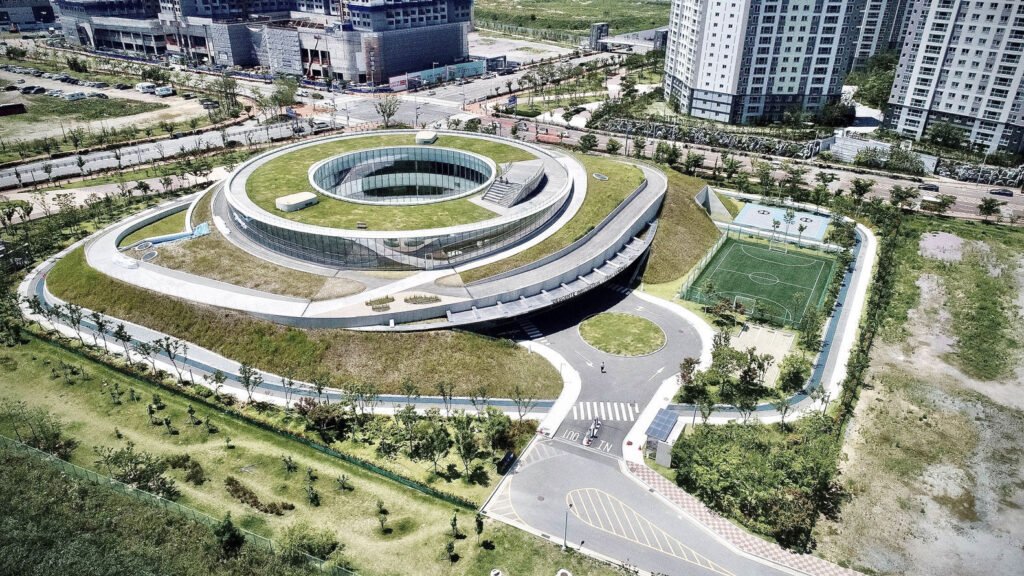Restorative and regenerative building designs evoke outspoken, loud subjects in architecture within a world increasingly concerned with sustainability and the environment. They include those design approaches that go beyond reducing harm to the environment but actually restore and regenerate ecosystems toward the path of a healthy planet.
The concept of regenerative building design is not just about the use of sustainable materials or energy efficiency, but about creating those spaces that are capable of giving something back to nature. These designs consider the entire life span of the structure, right from the time of material selection in construction to how it would interact with the environment over a period. Restorative design especially allows restoration to damages caused at ecosystems and constructs buildings in harmony with nature.
The concept of Regenerative design
Regenerative design takes its cue from the construction of structures capable of adopting features of natural systems. Other than simply reducing the negative environmental impact of a building, regenerative designs are net positive in that, with time, they will actually improve the environment. This might be done through renewable energy systems, water recycling, and sustainable building materials, but it goes even further.
A regenerative building is designed to generate more energy than it consumes, produce clean water, and contribute to biodiversity. These are designed in the full knowledge that buildings form part of a greater ecosystem and that their contribution must be toward the regeneration of that environment, rather than destruction or depletion.
Restorative architecture in action
Restorative architecture seeks to mend the damage brought about by past developments. This may mean that, in the urban environment where ecosystems have often been disrupted, restorative design may once again introduce greenery and restore soil health, cleaning the air through innovative landscaping and design features.
This can be achieved by incorporating green roofs and living walls into the building to provide habitats for local wildlife and reduce the urban heat island effect, calming and cleaning the air. Such a green canopy develops further with the seasons, enhancing not only the aesthetic appeal of the building but maintaining practical environmental functions, thus a contributor rather than a burden to its surroundings.
Restorative designs also maximize the use of natural light and ventilation as well as renewable energy resources from solar and wind. Their usage of non-renewable resources is minimal. A restorative design works for long-lasting sustainability and strives to leave the environment in a better condition than it was prior to construction.

Picture of iF DESIGN AWARD
Sustainable materials and a circular economy
Sustainable, low-impact material use is an important element of both restorative and regenerative designs. Most of the designs in each category make an effort to incorporate locally sourced, renewable, or recycled materials to decrease carbon footprints. Besides that, the buildings will often apply the circular economy’s principles where materials could be recovered for reuse or recycling at the end of the building’s life, which reduces waste and helps to achieve a more sustainable construction industry.
For example, restorative buildings minimize the ecological footprint from building through reused wood, natural stone, and recycled metals. Some regenerative designs go further by using materials that can actively clean the environment, such as concrete that absorbs carbon or biophilic elements that can improve air and water quality.
Energy efficiency
While energy efficiency forms part of the core elements in any sustainable building design, these regenerative and restorative designs go way beyond what has traditionally been done. These buildings normally have passive solar, renewable energy systems, wind turbines, and geothermal heating advanced designs meant to serve not just the energy needs of the building but to return energy surplus into the grid. Another key component is water management. Regenerative designs also incorporate grey water recycling, rainwater collection, and water filtration systems that cleanse the water as it passes through the building to enable the structure to become self-sufficient in water use, hence minimizing reliance on external sources.
The future of restorative and regenerative buildings
As the demand for sustainable living grows, restorative and regenerative designs have come to provide a model whereby architects and builders re-think the relationship between the built and natural environments. The thinking has moved away from merely not causing harm to designing buildings that will actually heal, restore, and regenerate.
The hope is that as more buildings adopt these principles, urban environments will become greener, healthier, and more resilient. Cities of the future could be filled with buildings that not only serve human needs but also actively contribute to the well-being of the planet.